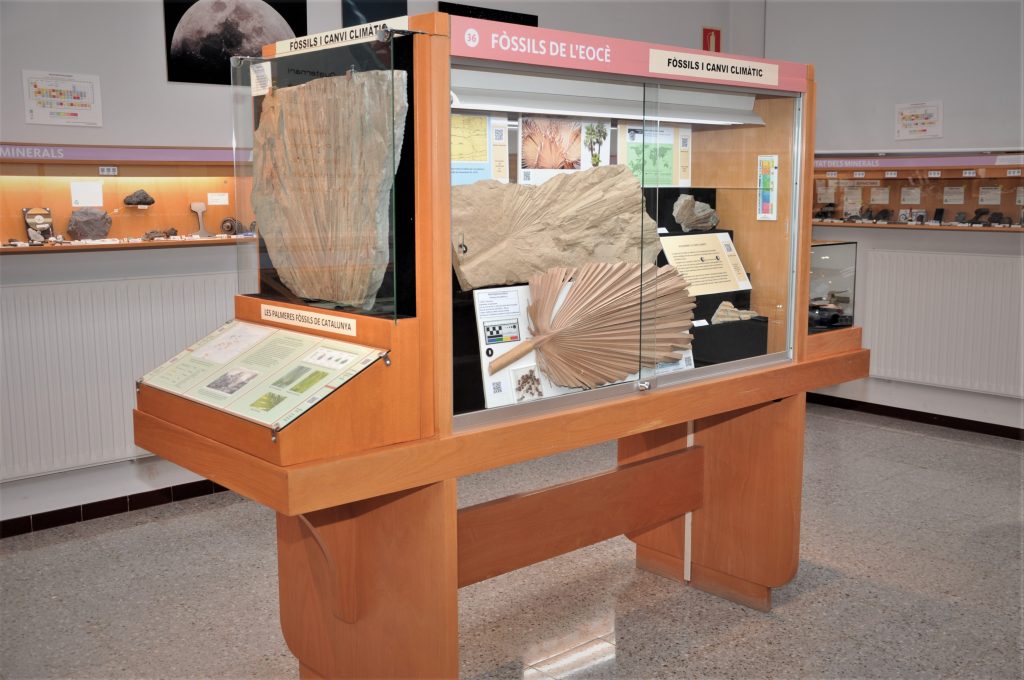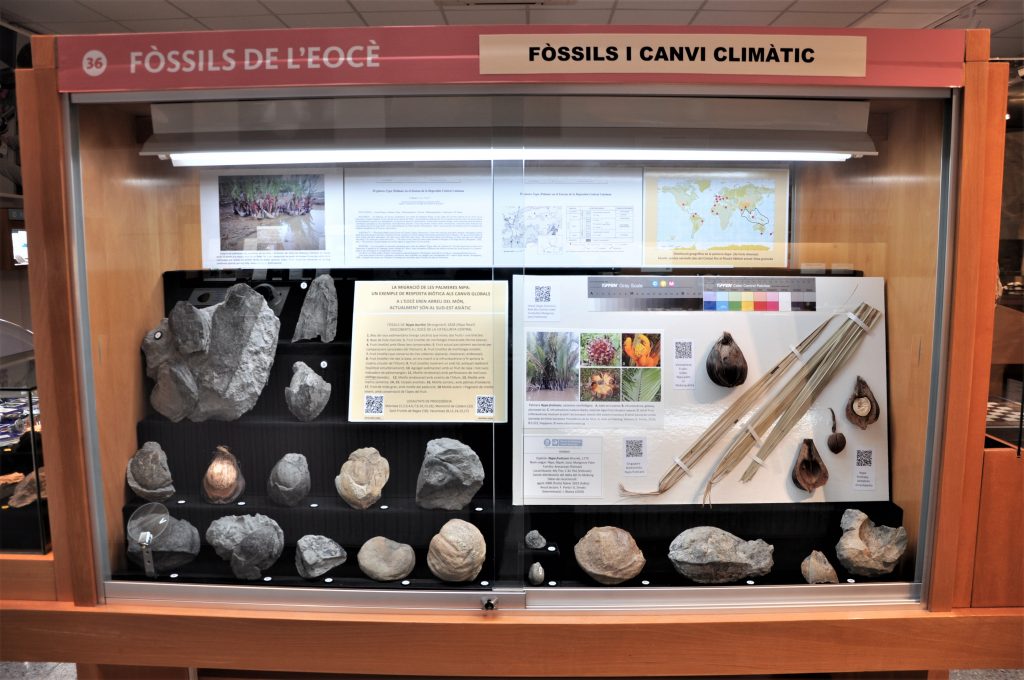Eocene fossils: Fossils and climate change
North sideboard (N): Current mangroves and fossil mangroves

Comparison between biotic elements of current and fossil mangrove ecosystems. Arrangement composed of imported specimens of fauna and flora from the Indo-Pacific zone and fossils from the Eocene of Bages, extracted from the museum’s paleontological collection.
South sideboard (S): Las Palmeras de Catalunya (photo 1)
Compilation of citations from the fossil record of palm trees in Catalonia. Evidence of paleobiodiversity and the relationship of Paleobotany with mining areas and the exploitation of quarries in Catalonia.
East sideboard (E): Las Palmeras and Climate Change

Exhibition of the biogeographical changes carried out by palm tree communities, in the course of geological times and on a global scale. Explanatory panels showing evidence that palm trees are reliable indicators of climate change. Examples of comparative anatomy between fossil palm leaves and current palm leaves.
West sideboard (W): Las Palmeras Nypa (photo 2)
An exhibition of the abundant fossil record of this palm, also discovered in the eocenic lands of Central Catalonia. A comparison of current fructifications with the remains of fossil specimens from the Museum’s collections. Explanatory panels that show how a palm tree with the greatest worldwide geographic distribution in the Cenozoic era, is still confined to the mangroves of Southeast Asiana.


